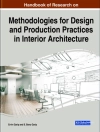Meet the challenge of integrating Building Information Modeling and sustainability with this in-depth guide, which pairs these two revolutionary movements to create environmentally friendly design through a streamlined process. Written by an award-winning team that has gone beyond theory to lead the implementation of Green BIM projects, this comprehensive reference features practical strategies, techniques, and real-world expertise so that you can create sustainable BIM projects, no matter what their scale.
قائمة المحتويات
Forword.
Introduction.
Chapter 1 Introducing Green.
Sustainability.
A Brief History of Sustainable Design.
Recent Trends Toward Sustainable Design.
Defining Sustainable Design.
Why Is Sustainable Design Important?
Green Building Rating Systems.
Living Buildings: The Near Future of Sustainable Design.
Chapter 2 Building Information Modeling.
What Is BIM?
Why Is BIM Important?
Understanding BIM.
Basic Benefits of BIM.
A Change in Method and Approach.
Beyond Documentation.
Migrating to BIM.
BIM as a Workflow.
Lewis and Clark State Office Building.
Ranges of BIM.
Chapter 3 Integrated Design Teams.
The Shift in Responsibility.
Why an Integrated Design.
The Team Members.
The Designers.
The Owner.
The Contractor.
The Community.
Collaboration, Commitment, and Passion.
Collaboration.
Owner Commitment.
Project Team Passion.
Facilitating Integration in Process.
Design Phase Workshops.
Predesign.
Schematic Design.
Design Development.
Construction Delivery Method.
Design-Bid-Build.
Negotiated Guaranteed Maximum Price.
Design-Build.
Is One Construction Delivery Method the Best?
Moving Forward.
Chapter 4 Methodology For Sustainable Solutions.
Order of Operations.
Understanding Climate, Culture, and Place.
Understanding the Building Type.
Reducing the Resource Consumption Need.
Using Free/Local Resources and Natural Systems.
Using Efficient Man-made Systems.
Applying Renewable Energy Generation Systems.
Offsetting Your Negative Impacts.
Chapter 5 Sustainable BIM: Building Form.
Getting Started.
Building Orientation.
Understanding the Impacts of Climate.
Reducing Resource Need.
Setting Project Goals.
Using BIM for Building Orientation: Finding Solar South.
Building Massing.
Understanding the Impact of Climate, Culture, and Place.
Reducing Resource Need.
Using BIM for Building Massing.
Analyzing Building Form.
Optimizing the Building Envelope.
Daylighting.
Understanding the Impacts of Climate, Culture, and Place.
Setting Project Goals.
Using BIM for Daylighting.
Chapter 6 Sustainable BIM: Building Systems.
Water Harvesting.
Understanding the Impacts of Climate.
Reducing Water Need.
Defining a Baseline and Setting Goals.
Using BIM for Water Harvesting.
Analyzing Water Harvesting.
Optimizing Water Harvesting.
Energy Modeling.
Understanding the Impacts of Climate.
Reducing Energy Needs.
Energy Use Baseline and Setting Project Goals.
Using BIM for Energy Analysis.
Using Renewable Energy.
Understanding the Impacts of Climate and Place.
Reducing Energy Needs.
Using BIM for Renewable Energy.
Analyzing Renewable Energy.
Optimizing a Solar Array.
Using Sustainable Materials.
Understanding the Impacts of Climate, Culture, and Place.
Reducing Material Needs.
Setting a Baseline.
Using BIM for Sustainable Materials.
Chapter 7 The future of BIM and Sustainable Design.
Moving Forward with BIM.
Using BIM as a Tool for Integration.
A Fundamental Tenet of True Sustainability.
Moving Forward with Sustainable Design.
Leading by Example.
Funding Green Design.
Opportunities for Change.
Index.
عن المؤلف
Eddy Krygiel, AIA, LEED AP is a practicing architect at BNIM
Architects, which has four projects that have received AIA COTE Top
Ten Green Project Awards. Eddy is responsible for implementing BIM
at BNIM and also consults for other firms looking to implement BIM.
He also teaches Revit to practicing architects and architectural
students and has lectured around the nation on the use of BIM in
the construction industry. Eddy has co-authored papers and books on
BIM and sustainability as well as several books on using Autodesk
Revit Architecture.
Bradley Nies, AIA, LEED AP, is a registered architect and
Director of Elements, the sustainable design consulting division of
BNIM Architects. Brad has worked on all levels of U.S. Green
Building Council LEED-Certified projects, including two that
achieved Platinum certification.












